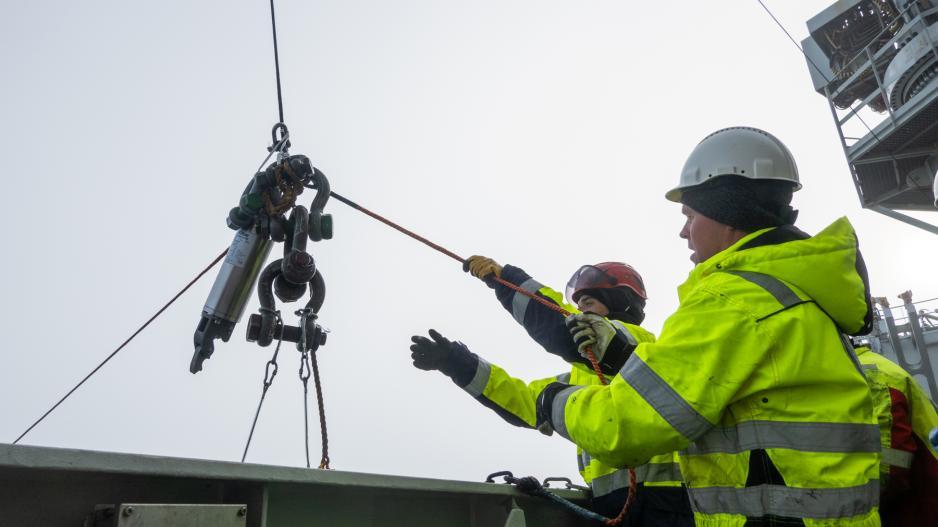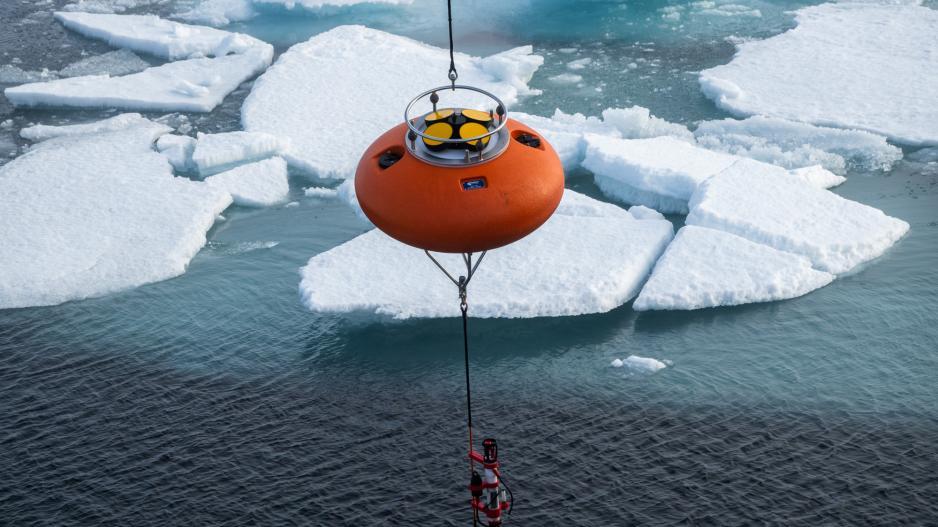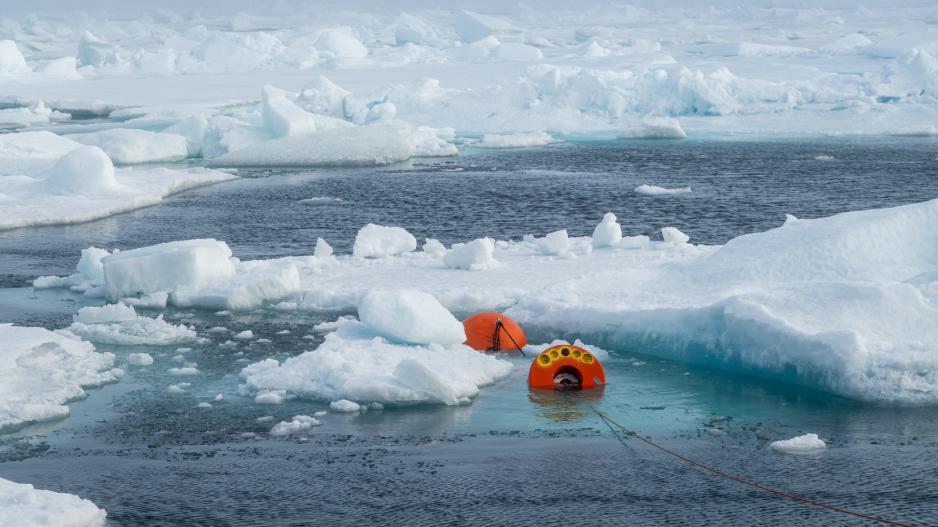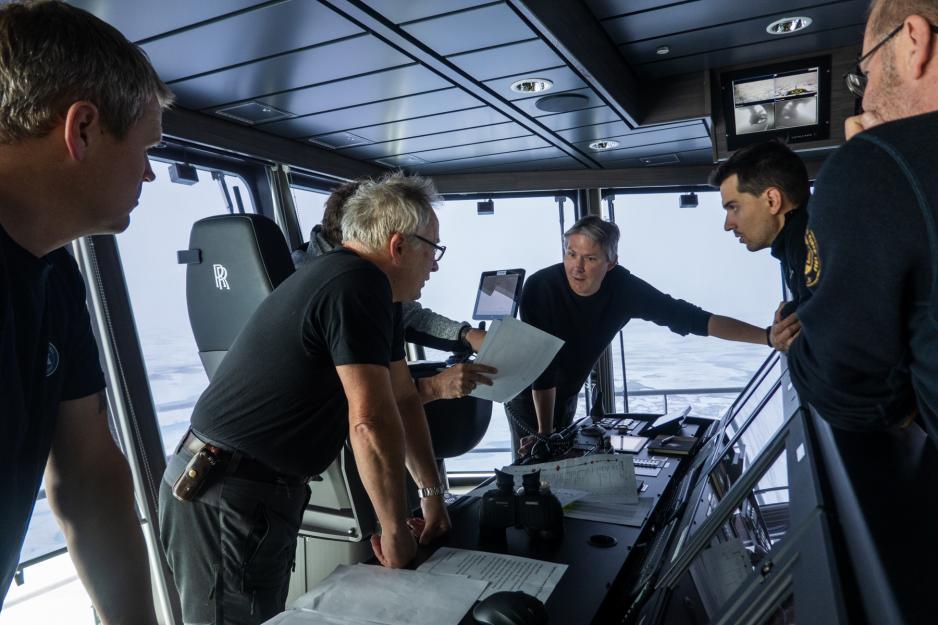
The staff of the research vessel Kronprins Haakon working on retrieving the rig containing the measuring instruments. The rig is the Norwegian Polar Institute's northernmost and deepest instrument rig ever. (Photo: Trine Lise Sviggum Helgerud/the Norwegian Polar Institute)

The staff of the research vessel Kronprins Haakon working on retrieving the rig containing the measuring instruments. The rig is the Norwegian Polar Institute's northernmost and deepest instrument rig ever. (Photo: Trine Lise Sviggum Helgerud/the Norwegian Polar Institute)

The staff of the research vessel Kronprins Haakon working on retrieving the rig containing the measuring instruments. The rig is the Norwegian Polar Institute's northernmost and deepest instrument rig ever. (Photo: Trine Lise Sviggum Helgerud/the Norwegian Polar Institute)

The staff of the research vessel Kronprins Haakon working on retrieving the rig containing the measuring instruments. The rig is the Norwegian Polar Institute's northernmost and deepest instrument rig ever. (Photo: Trine Lise Sviggum Helgerud/the Norwegian Polar Institute)





